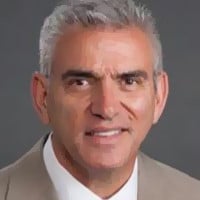Last week I discussed motion sickness, pointing out that it often has nothing to do with any inner ear disorder. However, occasionally it is directly related to an inner ear disorder.
I will try to explain…
Seasickness
Seasickness represents an extended sensory conflict, whereas brief sensory conflicts typically do not induce nausea despite causing momentary disorientation. A familiar example of a brief sensory conflict occurs while driving: imagine sitting at a red light, hands on the wheel, when a large truck pulls up next to you and suddenly moves forward a few feet.
Initially, your visual feedback gives the illusion of your car rolling backward, prompting a reflexive response until you realize it is the truck, not your own vehicle, that is in motion.

Individuals with compromised vestibular function may find these situations more challenging due to reduced available vestibular information. Those with cerebellar dysfunction or taking sedating medications may exhibit slower responses to the vestibular signals indicating their own lack of movement.
Although a vestibular disorder can exacerbate these issues, it is not the root cause of the sensory conflict. I refer to these instances as “fleeting disorientation,” where the entire episode lasts less than a second without any accompanying nausea or lasting confusion. It is akin to momentarily “losing it,” swiftly regaining composure thereafter. However, such occurrences pose risks if they happen while driving or engaging in potentially hazardous activities.
Sometimes motion sickness (I prefer the term motion “intolerance” in this particular situation) can be the direct result of an inner ear disorder. I will address this topic in two weeks. But before that, I want to lay a little foundation. So, to do that, lets delve into the physiology of the balance system.
About the author
 Alan Desmond, AuD, is the director of the Balance Disorders Program at Wake Forest Baptist Health Center, and holds an adjunct assistant professor faculty position at the Wake Forest School of Medicine. He has written several books and book chapters on balance disorders and vestibular function. He is the co-author of the Clinical Practice Guideline for Benign Paroxysmal Positional Vertigo (BPPV). In 2015, he was the recipient of the President’s Award from the American Academy of Audiology.
Alan Desmond, AuD, is the director of the Balance Disorders Program at Wake Forest Baptist Health Center, and holds an adjunct assistant professor faculty position at the Wake Forest School of Medicine. He has written several books and book chapters on balance disorders and vestibular function. He is the co-author of the Clinical Practice Guideline for Benign Paroxysmal Positional Vertigo (BPPV). In 2015, he was the recipient of the President’s Award from the American Academy of Audiology.
**this piece has been updated for clarity. It originally published on July 23, 2013






